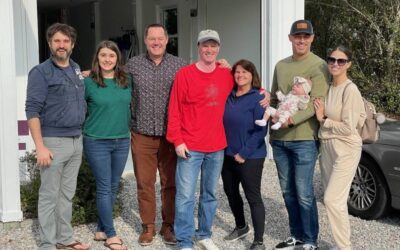We’ve conducted hundreds of hours of research and observed many co-ownership case studies. This allowed us to see what worked with co-ownership, and what didn’t. While keeping co-owners anonymous of course, we wanted to go over some of the good, the bad, and the in-between.
The Good
This Group of six co-owners who purchased a home together at Bald Head Island, NC. The the main takeaways from the co-owner we interviewed were that a large Group can be more complex but also more flexible, having formal bylaws are important to maintaining the property and living agreement, and different people end up taking on different tasks. He stated that bylaws were particularly important, examples for them being a no pets rule and a keep certain things supplied rule “if you kill it, fill it.” Because of the communication between his group, the co-owner called this co-ownership experience great and claimed it had a sense of community.
The In-between
This case was with a Group of three co-owners who had a vacation home at Lake Gaston, NC. The co-owner we interviewed claimed he had a “fine” experience while co-owning the house, but working out some key details upfront could have improved it. His main points of emphasis were that having clear legal and financial expectations upfront is key, being strict on recording financial details, and ensuring appraisal when exiting the home. Because some of these things weren’t handled perfectly, the co-owner always felt like he was in someone else’s place, he never felt truly
The Bad
Things didn’t work out perfectly for this Group. It was a Group of four co-owners who purchased a home together at Wrightsville Beach, NC. According to the individual we interviewed, the biggest source of the issues was that decisions and rules were not laid out in advance. They did not clearly work out the rental income situation, and when some exterior factors came into play, it fell apart. This along with some differing interests that were not worked out in advance (some wanted the house to be a party pad, others a relaxing family home with nice decor) caused the Group to have a falling out.
How to ensure you get “The Good”
These case studies helped inspire our model at Plum CoOwnership. They really stressed to us that confirming all financials and rules ahead of time with your Group and documenting them in an Operating Agreement is essential. As long as these details are laid out in your Operating Agreement, and you ensure you have good harmony with your Group, a great co-ownership experience is waiting for you.




